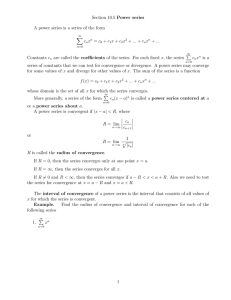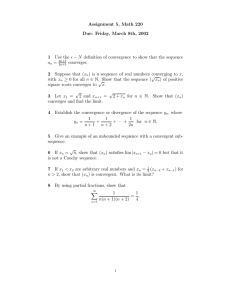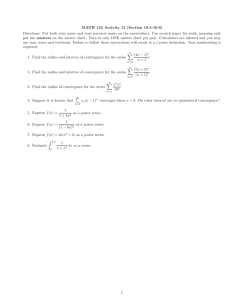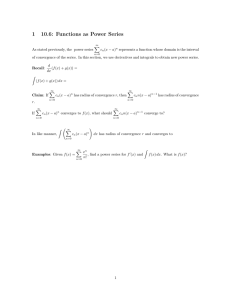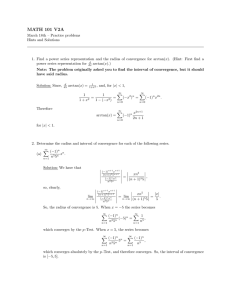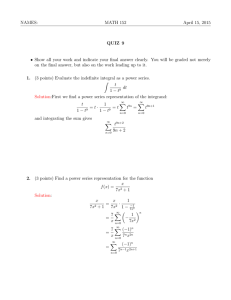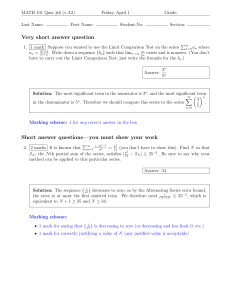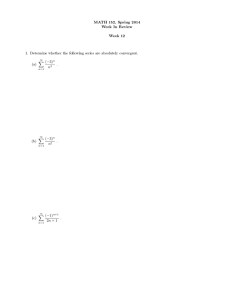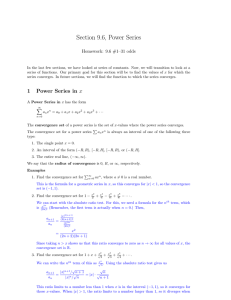Power series power series ∑ c
advertisement
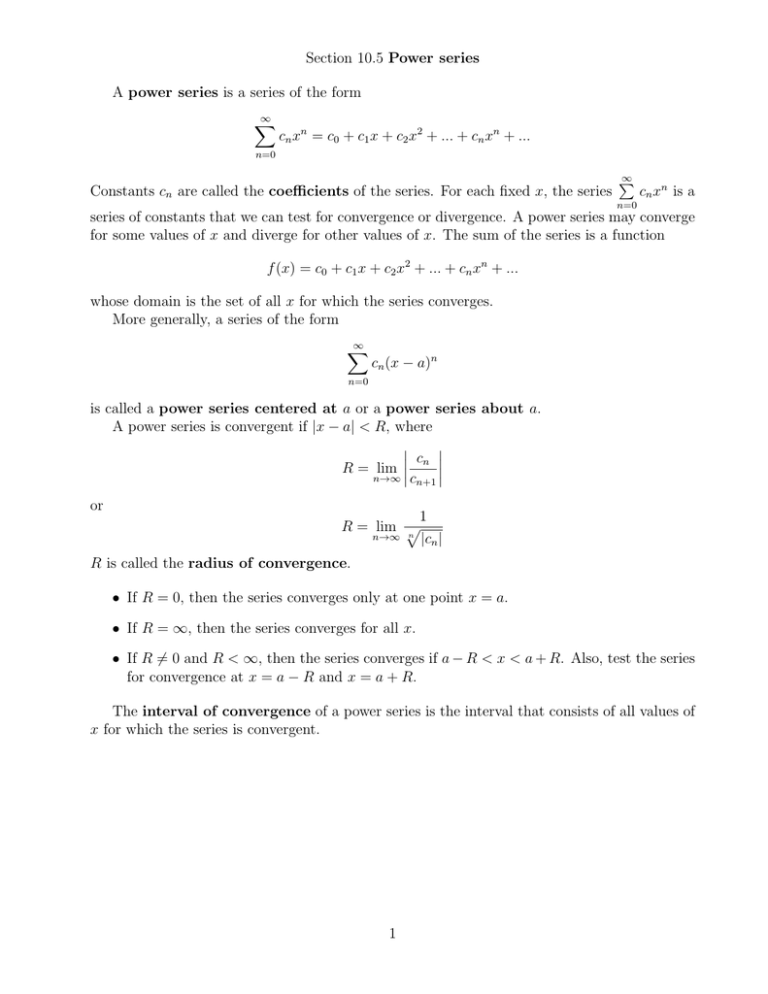
Section 10.5 Power series A power series is a series of the form ∞ ∑ cn xn = c0 + c1 x + c2 x2 + ... + cn xn + ... n=0 Constants cn are called the coefficients of the series. For each fixed x, the series ∞ ∑ cn xn is a n=0 series of constants that we can test for convergence or divergence. A power series may converge for some values of x and diverge for other values of x. The sum of the series is a function f (x) = c0 + c1 x + c2 x2 + ... + cn xn + ... whose domain is the set of all x for which the series converges. More generally, a series of the form ∞ ∑ cn (x − a)n n=0 is called a power series centered at a or a power series about a. A power series is convergent if |x − a| < R, where cn R = lim n→∞ cn+1 or 1 R = lim √ n→∞ n |c | n R is called the radius of convergence. • If R = 0, then the series converges only at one point x = a. • If R = ∞, then the series converges for all x. • If R ̸= 0 and R < ∞, then the series converges if a − R < x < a + R. Also, test the series for convergence at x = a − R and x = a + R. The interval of convergence of a power series is the interval that consists of all values of x for which the series is convergent. 1 Example. Find the radius of convergence and interval of convergence for each of the following series 1. ∞ ∑ xn n=0 2. ∞ ∑ n=0 xn (n + 2)! 2 ∞ ∑ n!(x + 1)n √ 3. n+3 n=0 4. ∞ ∑ (−1)n xn √ 3 n n=1 3 5. ∞ ∑ (x − 4)n n=1 6. n5n ∞ ∑ n2 (x + 1)2n n=0 10n 4
